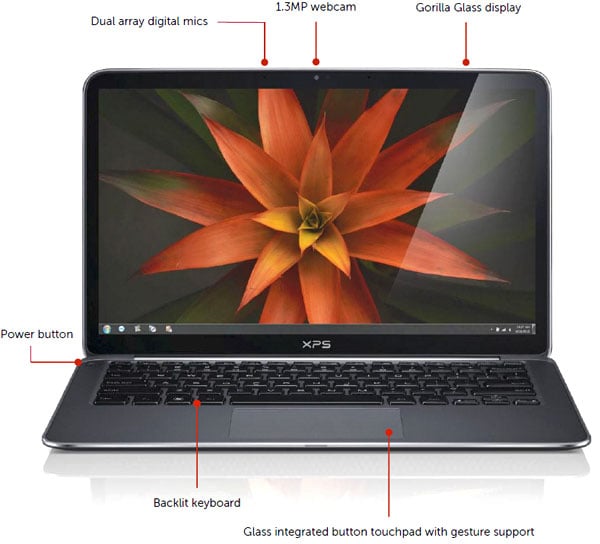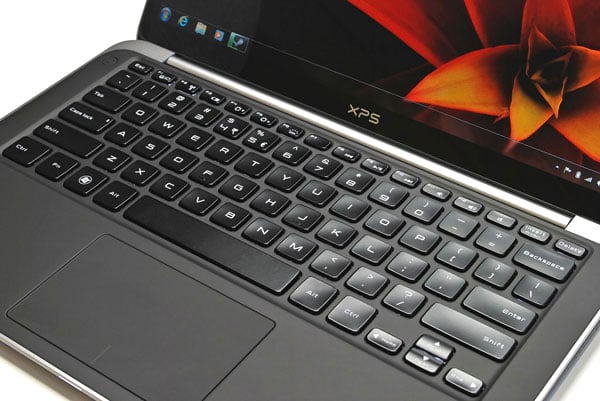Dell XPS 13 Ultrabook Review
Introduction and Specifications
Ultrabooks are an interesting phenomenon. It's like the industry took a long hard look at the emaciated netbook market and decided consumers deserved better. Thank God. We're big fans of the thin and light trend in notebooks, and netbook price points are something we all can appreciate. However, as performance enthusiasts, netbooks just leave us flat, to be honest; no matter how small they are, how inexpensive or how miserly they are on power consumption. It's encouraging to see the burgeoning ultrabook market take flight with virtually all of the major players behind the vision Intel helped inspire.
Today we're continuing our coverage of the ultrabook onslaught with Dell's first effort in the space, the XPS 13. We've already shown you what Asus' and Toshiba's offerings were made of. Let's take a look at how Dell's new 13-inch slice of cutting-edge technology handles the test track. First up, our hands-on video spotlight...
Today we're continuing our coverage of the ultrabook onslaught with Dell's first effort in the space, the XPS 13. We've already shown you what Asus' and Toshiba's offerings were made of. Let's take a look at how Dell's new 13-inch slice of cutting-edge technology handles the test track. First up, our hands-on video spotlight...
|
| Processor Options | Intel® Core™ i5 2467M Dual Core (1.60GHz w/ Turbo Boost 2.0 to 2.30GHz) Intel® Core™ i7 2637M Dual Core (1.70GHz w/ Turbo Boost 2.0 to 2.80GHz) |
| Chipset | Intel® QS67 |
| Dimensions (HxWxD) | Height: 0.24-0.71" / Width: 12.4" / Depth 8.1" |
| Starting at Weight | Starting at 2.99lbs (1.36kg) |
| Display | 13.3" HD WLED, 300-nit (1366x768) edge-to-edge Gorilla® Glass |
| Construction | Machined aluminum in silver, Carbon fiber composite base Magnesium palm rest with soft touch paint |
| System Memory | 4GB dual channel DDR3* 1333MHz; on board |
| Graphics | Intel® HD 3000 graphics |
| Battery | 47WHr battery; 6-Cell Li-Polymer (built-in) Up to 8 hours, 53 minutes battery life* |
| AC Adapter | 45W AC adaptor |
| Hard Drive Options | 128GB or 256GB SSD drive option |
| Keyboard / Touchpad | Standard full size, backlit chiclet keyboard; spill-resistant Glass integrated button touchpad with gesture support |
| Wireless Connectivity | Intel® Centrino® Advanced-N 6230 802.11 a/g/n with Intel® Smart Connect Technology + Bluetooth 3.0, Intel® Wireless Display ready* |
| Sound | High Definition Audio + Waves MaxxAudio® 4 1.5W x2 = 3W total |
| Webcam | 1.3MP webcam with dual array digital microphones |
| Ports and Connectors | USB 3.0 (1)+ USB 2.0 with PowerShare (1); mini DisplayPort (1); Headset Jack (1) |
| Productivity & Entertainment Software | Adobe® Reader X, Microsoft® Office Starter (reduced–functionality versions of Word and Excel with advertising), WebCam Central, Skype™* with H.264 enablement, Skyhook (post launch), Internet Explorer, Windows Live™ Essentials Wave 4, McAfee SecurityCenter trial, Dell DataSafe, Dell Stage |
| Operating System Options | Windows® 7 Home Premium, Windows® 7 Professional, Windows® 7 Ultimate |
| Pricing: |
$1499 as tested - 256GB SSD, Core i7-2637M $999 - 128GB SSD, Core i5-2467M |
Dell does a nice job of striking a balance here, between features, performance and cost. The team obviously invested quite a bit in the display, however, as Dell's 13-inch edge-to-edge Gorilla Glass strapped LCD is arguably one of the nicer panels out there in this class of machine. Other tangible tradeoffs between build quality and cost are the XPS 13's machined aluminum, carbon fiber and magnesium alloy construction that definitely gives the little fella a solid, well-built and polished feel.

In all honesty, though perhaps it sounds a little contradictory to our opening sentiments above, if you're looking to save a few pesos, the lower-end $999 SKU, with its 128GB SSD and Core i5-2467M dual core, is probably powerful enough and responsive enough for just about anything you could reasonably expect to do with an ultrabook. With 4GB of RAM and an SSD, Windows 7 is going to feel energetic and spry. You'll just have to keep your data collection in check and level-set your expectations in gaming. Beyond that, did you notice the real kicker? Right. Wake the kids--the XPS 13 has a backlit keyboard. Hello? Why can't every manufacturer make this standard? And tone down, typing ninjas; we realize actually seeing the keyboard shouldn't be a requirement for true geeks. That said, on an occasionally cramped ultralight keyboard, in front of the TV with only mood lighting going on, it comes in rather handy. No pun intended.







